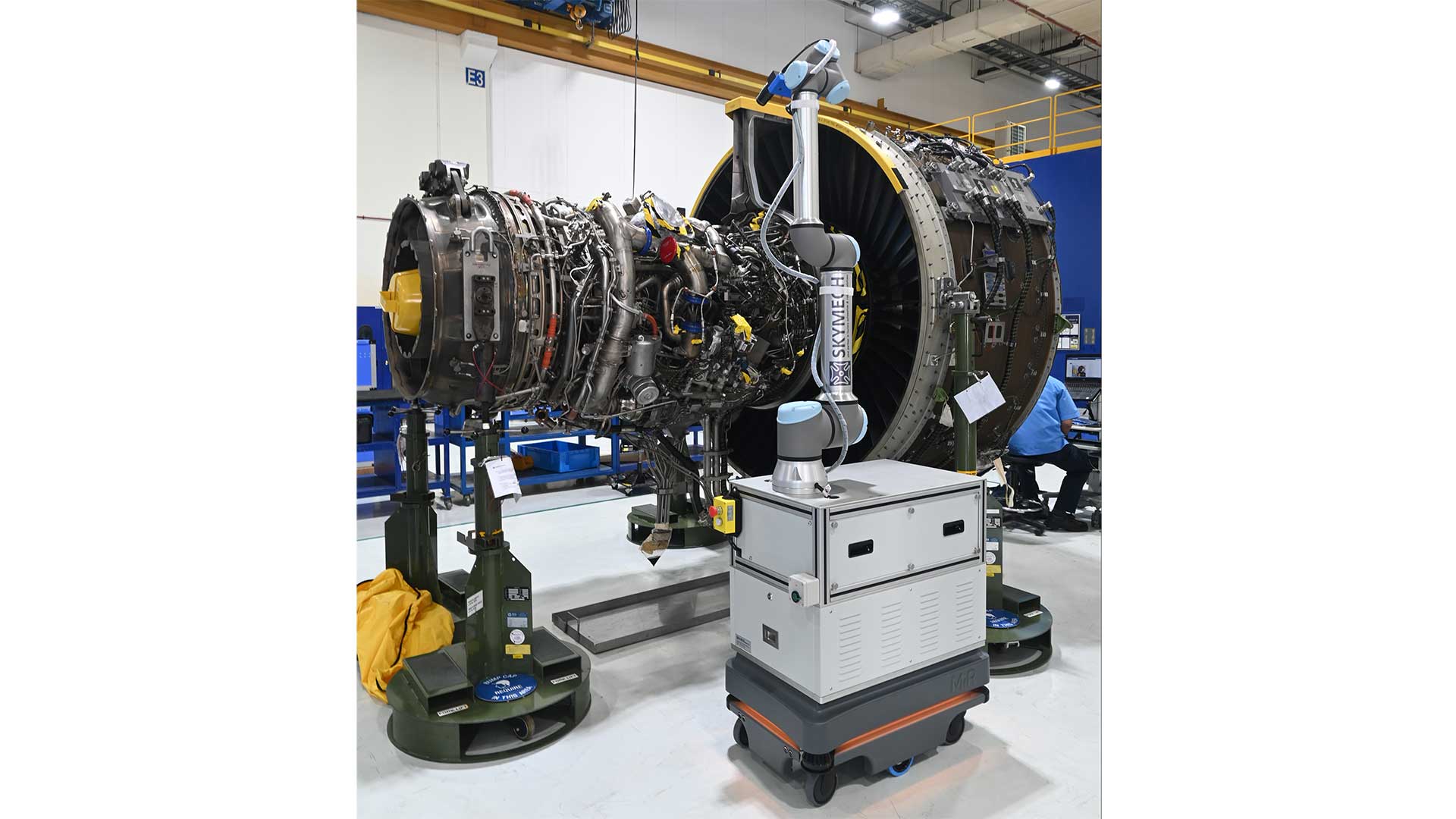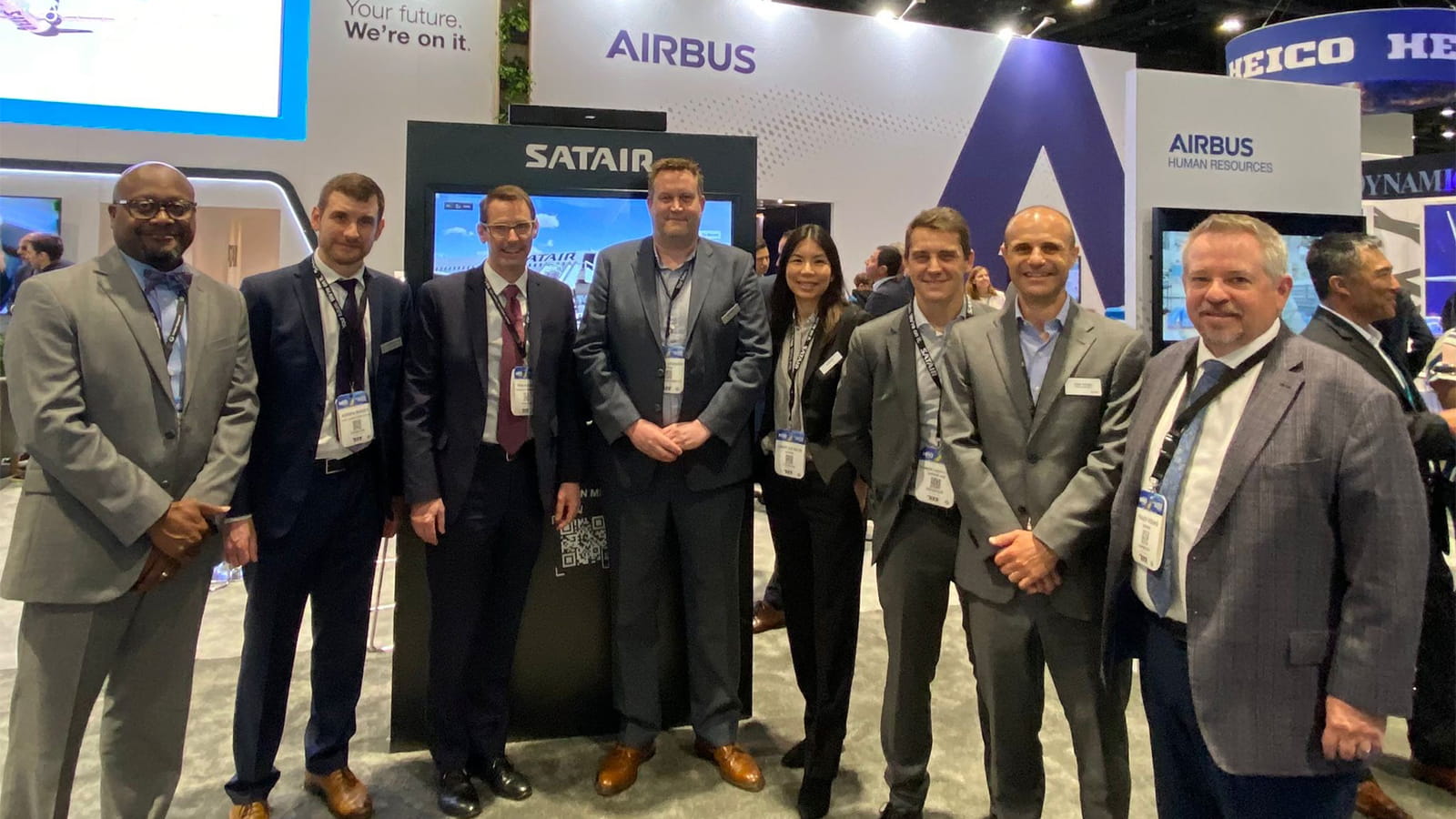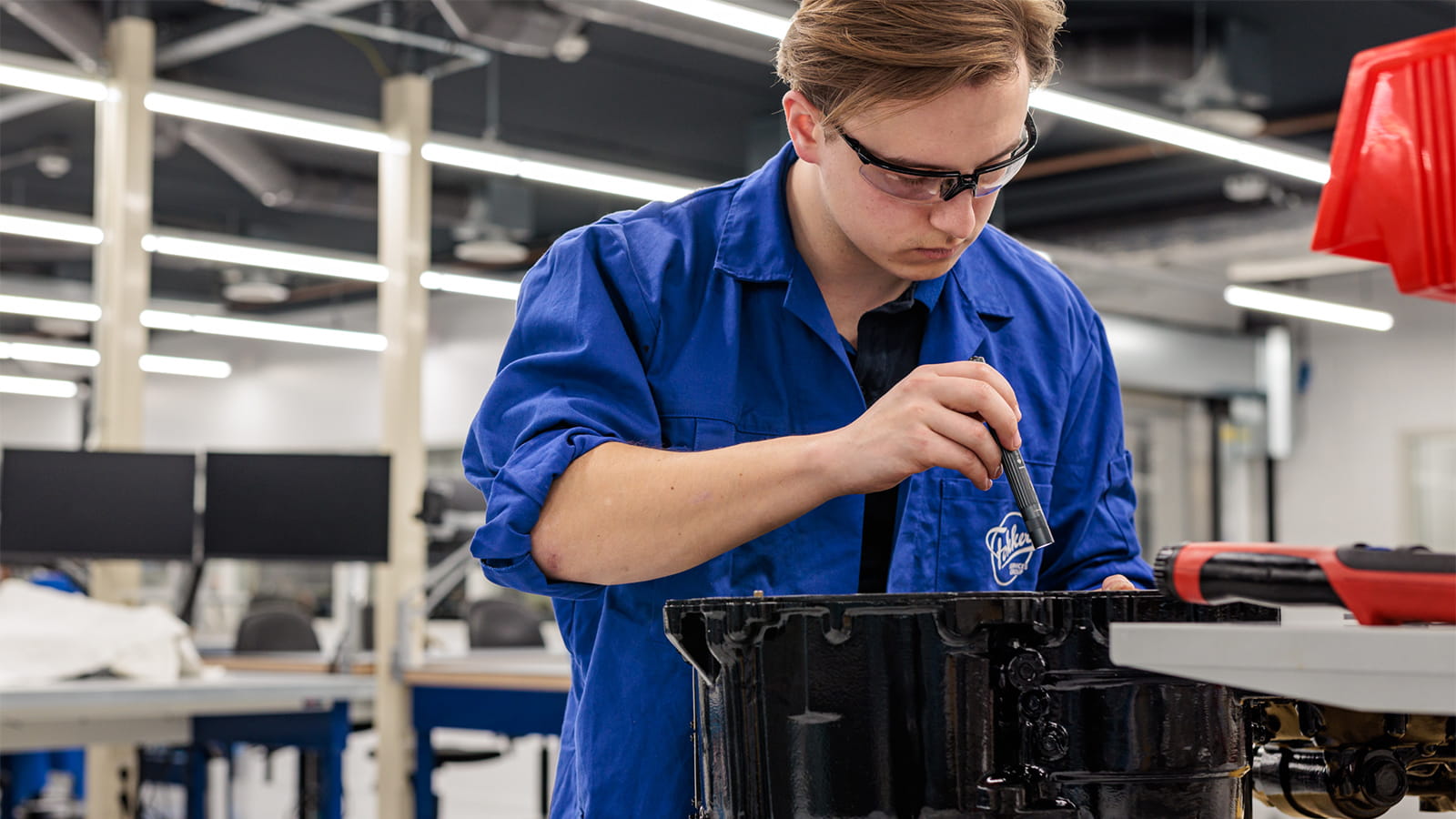Redefining MRO Operations:
Collins Aerospace’s Singapore teams are transforming tasks through technology
At Collins Aerospace’s maintenance, repair, and overhaul (MRO) facility in Singapore, an Automated Vision Inspection (AVI) System uses advanced robotics and optical character recognition software (similar to QR codes) to reduce the time it takes for technicians to complete inspections – from an hour to just minutes. And those inspections can be done on a multitude of products, ranging from generators to inventory kits.
Developed In-house, innovations like these robots are just one example of how Collins Aerospace, a Raytheon Technologies business, is using smart technology to overhaul its manufacturing and industrial processes, automate repetitive tasks and bring new benefits and savings to customers as part of ongoing Industry 4.0 – or the Fourth Industrial Revolution – developments.
“We’ve been working for some time to mature Industry 4.0 concepts to address the complexity of MRO challenges for the aerospace industry,” said Daven Tey, regional director for Aftermarket Operations for Collins Aerospace in the Asia-Pacific region. “As these technologies have become more affordable and highly customizable, we’ve been pursuing innovative ways to transform our operations. We’re now starting to see ideas like the AVI system come to life on the shop floor.”
A closer look, thanks to robotic imaging
So, how exactly does the AVI inspection robot complete its tasks in such a short period of time? Through technology called Machine Vision, the robot’s camera takes images of items under inspection, such as large jet-engine nacelles, then compares them to what are known as “golden images,” or pictures of the same items in an ideal state. That helps root out irregularities that might include missing pieces and faulty assembly. Given that they are mounted on the articulating arms of the wheeled, autonomous robots, the cameras can take pictures of just about anything. That combination of technologies allows the inspection camera to move wherever it needs to go to make precise analyses.
The benefits of the robotic inspector for the Collins Aerostructures team in the Singapore MRO are clear. When inspecting the 159 items in its Quick Exchange Kit, for example, the robot takes 56 photos – the same ones, every time – then analyzes them more efficiently and accurately than the previous manual process ever could have.
Capturing job data in real time
The Aerostructures team also developed a home-grown Digital Operating System (DOS) that captures job data in real time, at every repair line station, and makes it visible instantaneously to the entire team. The live, detailed information allows employees to prevent problems, communicate in a timelier way – even with colleagues at other facilities – and eliminate waste. That capability was especially important in overcoming geographical constraints brought about by the COVID-19 pandemic.
“Digital shop floor connectivity between our Singapore and China MRO sites is now a reality,” said director for Aerostructures Operations, Lee Theng Liang. “The DOS system we developed amplifies site efficiencies by facilitating Real Time Problem Resolution via electronic ‘management-by-walking-around' meetings across sites.”
The Singapore facility has also equipped tools on the shop floor with Radio-Frequency Identification (RFID) technology chips that keep track of where everything is at any time. Since RFID uses electromagnetic fields to automatically identify and track tags attached to objects, technicians no longer have to search for a loose component of an assembly jig. They can simply use a computer to find out where it is.
“We are all working together to evolve our MRO shops by combining data and science with state-of-the-art robotic and automation technology to enhance efficiency and collaboration,” says Lee. “And we’re just getting started.”
Boosting quality and efficiency, lowering cost
Robots and automation are bringing big benefits to employees and customers, namely:
- Increased quality control.
- Higher job satisfaction now that technicians can spend more time on the types of tasks people do well, like those that require critical thinking.
- Workforce flexibility in response to more streamlined operations.
- Lower costs, thanks to greater efficiency and less rework.
Given the shop-floor efficiencies that are now a reality in Singapore, Collins’ other MRO sites are looking to them to determine how they, too, can take the lessons learned and scale up benefits for even more customers around the world.
“We’ve developed some great technologies here, implemented them in real-world scenarios throughout our facility and are making them available to ‘plug and play’ across the company,” Tey said.
Another way to innovate: Singapore Innovation Hub
To further assist MRO teams in addressing customer pain points, such as inventory management and parts availability, Collins Aerospace opened the Singapore Innovation Hub (iHub) – a 10,000 square-foot facility dedicated to new technologies – in early 2020. Its team of employee experts in robotics and automation engineering, software development and data science are working closely with MRO teams to transform operations by delivering ongoing proof of concepts that will evolve into newer and better service offerings for MRO customers – such as those being used by the Aerostructures team.
The iHub is leveraging automation, sensing, and machine learning technology while advancing additive manufacturing capabilities and techniques as one of Collins’ centers of excellence. Going forward, the iHub and local MRO teams will continue working closely together to develop new Industry 4.0 projects.



